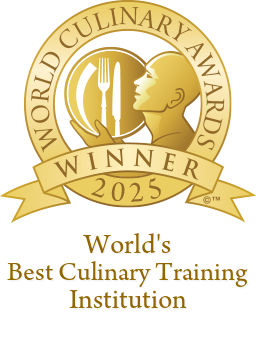From Plate to Pixels: Exploring the Art of Food Photography
With help from Maria Greco Naccarato, a Milanese who has lived in Paris for 10 years, we explore the dialogue between the visual arts and the culinary arts.
As a director, chef and photographer, she shares her insightful vision of food photography, AI and how you can develop your own photographic flair.
What is food photography
Food photography is a mode of visual storytelling that captures the beautiful and mouth watering form of food in an image.
Whether it’s a beautifully plated dish, burger, or salad, food photographers aim to make the food look irresistible to the viewer. These images find their way into advertisements, magazines, packaging, menus, cookbooks, and even social media posts.
What makes a good food photo?
The important thing is not the tool or the medium, it’s understanding the basics of photography that matters.
Whether you take photos with a high-end camera or a mobile phone, the photos won’t be good without proper technique. Training your eye is the key. Photography is a language you have to learn. Knowing the basics of photography is essential.
The most important things to do are to think about light and composition. Pictures have a language, a story to tell and it’s the same with cooking.
How can you capture the textures, colors, flavors and aromas? In both cases, you are telling stories. The purpose of food photography is to share the story of the food with those who look at the photos, to make them feel all the emotions and awaken all their senses.
Understand the personality of the subject (get in the mind of a chef)
When taking photos of food, it’s essential to know what chefs do.
Personally, I’m glad to be a chef too, because I understand the work of the people I take pictures of. I recently did a photo shoot, and when I talked to the chef, I understood the specifics of the technique he was going to use.
To put it simply, by knowing culinary technique, it allows you to te things further, to enhance the gestures and to focus on emotion rather than technique. The language of images should remove any difficulty. Things should look natural. I think that’s the role of a good food photographer.
Bring your photos to life with good composition
When it comes to technique, composition and understanding the camera’s point of view is key. You have to create a bubble in which the viewer is immersed when they look at the photo for the first time.
It is essential that you anticipate and imagine what the viewer will look at. It’s all about projection and imagination. However, with new technology and especially retouching software you can make colors more vivid, adjust the light and focus on specific elements.
Finding your inspiration
Another important element in creating a great piece of food photography is inspiration.
I do not want to be too influenced by colleagues and contemporaries, so I turn to paintings for her source of creativity. Although you’re free to look wherever suits you best.
One particular inspiration of mine is a painter called Boldini. He lived in Paris in the 1920s and painted portraits of the most beautiful women in Paris. The way he captured light, his lines and his compositions are interesting. His work is a huge inspiration to me. I think you have to draw inspiration from beautiful images.
And to those looking for inspiration — open your eyes and embrace the world. Be inspired by everything that surrounds us.
5 Food photography tips
- Use natural light
- Experiment with angles
- Complement your surfaces, cutlery and plating
- Play with shadows
- Build your composition
What makes a successful food shoot?
Preparation is key when it comes to a successful food photography shoot. This also includes managing the client — which is also essential.
You have to take the time to talk to the client directly during the shoot, but also beforehand. You need them to think about their expectations, references and codes.
I usually ask my clients to send me a picture that represents their work and inspires them. You have to engage in an exchange. In a way we’re intermediaries, facilitators and translators. We guide the client to help them find out what they really want, and then we have to convey their intentions using our style and our photographic language.
Artificial intelligence and food photography
While I’m not opposed to AI in food photography, I can see that it might end up affecting the profession in a negative way.
I think that a huge part of photography as a profession is very likely to disappear. This means that to maintain the value of my work, I have to add a bit of humanity, a bit of myself, more than ever.
My strength, our strength as photographers, is our ability to tell the story of the present, to anchor the language of photography in the moment, in the suspended, elusive moment of creation.
Learn food photography from the very best at École Ducasse
At École Ducasse you can learn the fine art of food photography with Maria Greco Naccarato herself.
In her course Maria looks to help students achieve excellence at every level.
“I often notice that students have a great deal of potential, but they need guidance. Most of the time, they don’t concentrate enough on the frame or the light – basically they’re working too fast.
I want them to realize that a photo is a whole. It’s not just about what you want to show, it’s also about the background. Culinary excellence deserves visual excellence too.”
Learn more about culinary arts at École Ducasse


